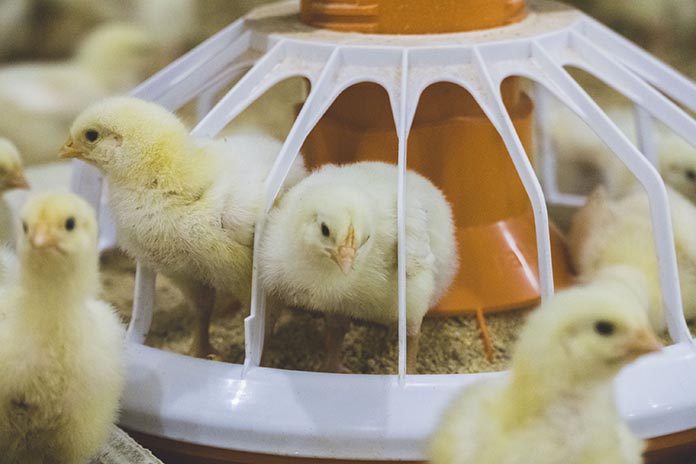
Supplementing poultry diets with xylanase partially depolymerizes the xylans present in the dietary cereals, reducing the number of sugars in the molecular chains. The resulting oligosaccharides can be selectively fermented by beneficial intestinal bacteria, resulting in improved nutrient utilization (De Maesschalck et al., 2015). The study aim was to investigate the production of xylo-oligosaccharides (XOS) in different batches of Australian wheat, in the presence or absence of xylanase. Five different batches of wheat were selected from NSW, VIC, QLD, WA and SA. Samples were exposed to a 2-step in vitro digestion assay that simulated gastric (pH 3.5 with 0.1M HCl and pepsin) and small intestine (pH 6 with 1M NaOH and pancreatin) phases of digestion in broiler chickens. Either 0 or 16,000 BXU/g xylanase (Econase XT 25, AB Vista Feed Ingredients, UK) was added. The samples were centrifuged and resulting supernatant prepared for analysis of XOS composition, along with standards of xylobiose (X2), xylotriose (X3), xylotetraose (X4) and xylopentaose (X5) (Morgan et al., 2018). The standards and samples were analysed on a Shimadzu LCMS-8050 with a C18 HPLC column by electrospray ionization.
Xylanase inclusion diversely impacted XOS production across the wheat varieties, demonstrating how growth conditions impact their susceptibility to degradation in the gastrointestinal tract environment, and where in the tract the majority of XOS production occurs. The greatest abundance of XOS was produced from wheat from NSW, wheat from QLD seemed to be degraded substantially during the gizzard phase but no further in the ileal, and wheat from WA produced the most X2 and X3. This study highlights a new and important facet of cereal NSP content and highlights the need to focus xylanase research on determining the optimal XOS production rate and location to generate the best prebiotic effects in wheat based diets.
References
Morgan N, Keerqin C, Wallace A, Wu S-B & Choct M (2018) Animal Nutrition (in press) https://doi.org/10.1016/j.aninu.2018.05.001
De Maesschalck CD, Eeckhaut V, Maertens L, De Lange L, Marchal L, Nezer C, De Baere S, Croubels S, Daube G, Dewulf J, Hasebrouck F, Ducatelle R, Taminau B & Immerseel, FV (2015) Appl. Environ. Microbiol. 81: 5880-5888.
From Aust. Poult. Science Symp. 2019

















